Alla tar med sin favo-mjukis till program!
Author: Martin
Programboknings-systemet Hollyrosa är nu redo för 2023
Programboknings-systemet Hollyrosa är nu redo för 2023.
2022 påbörjades arbetet att migrera systemet till att servas från nginx + wsgi och den migreringen är nu helt klar. Samtidigt avslutades migreringen till python 3 och CouchDB 2.
Programboknings-systemet Hollyrosa är nu redo för 2019
Programboknings-systemet Hollyrosa är nu redo för 2019. Inga större programuppdateringar har gjorts än, det blir senare i år.
Hollyrosa har fått ett ansiktslyft
Programboknings-systemet Hollyrosa har fått ett större ansiktslyft. Efter att ha uppgraderats till HTML5 så har jag nu valt Bulma som CSS system och i och med det så har sidor uppdaterats för att dra nytta av allt som Bulma har att ge.
Hollyrosa har fått ett nytt menysystem vilket är mycket smidigare och visa sidor har fått lite mer förbättringar än bara ny CSS.
Hollyrosa är inte designat för att primärt vara mobile-first, men med Bulma så börjar vi nu använda flex-box design så de sidor som man typiskt titta på i mobilen eller sin padda kan man lägga ner lite möda på att göra mer mobilvänliga. De delar av Hollyrosa som kräver relativt mycket skrivande behöver primärt inte se bra ut i mobiler.
Ett av grundmålen med Hollyrosa var att ge en bra och fullständig överblick och det kräver en stor skärm. Hollyrosa är en fröjd i 24 tum.
Hollyrosa upgraderad
Programbokningssystemet Hollyrosa har nu i vinter upgraderats internt. Det är ett rätt omfattande arbete som om allt gått rätt knappt syns alls.
Hollyrosa har uppgraderats till senaste TurboGears 2 – version 2.3.11 och i samband med det så koverterades alla sidor till HTML5 (vilket är en av de stora förbättringarna) och för att lyckas med det så var jag tvungen att byta ut template-maskineriet från Genshi till Kajiki och därmed även upgradera alla widgets från Tosca Widgets 1 till Tosca Widgets 2.
Huvudpoängen är att Hollyrosa nu är upgraderad till HTML5 vilket gör att vi kan bygga vidare med moderna CSS tekniker och reaktiv programering framöver.
I samband med upgraderingen så passade jag på att uppgradera till dojo 1.11.3 men det bör knapt märkas heller.
Enjoy
Programboknings-systemet Hollyrosa är nu redo för 2018
Programboknings-systemet Hollyrosa är nu redo för 2018.
Inga större programuppdateringar har gjorts än, det blir senare i vinter.
ECMC 2017 – How the rest went
This is part 6, the final part, in a series on posts from my experience being part of the planning team for European Guide and Scout Centre Managers Conference (ECMC) 2017.
Check out the statistics for autumn in Iceland: any day has a 45% chance/risk of rain. Say for example that you exit the planning teams HQ, in order to go the the Gillwell Hall. Its a fifty meter walk in sunshine but cold winds. You spend about 25 minutes rearranging tables and preparing the hall for upcoming workshops. You are in a rush to get back to HQ but s you exit through the front door you realize that it is no longer sunshine. It is raining. I learned that on Iceland, you bring your rain jacket everywhere.
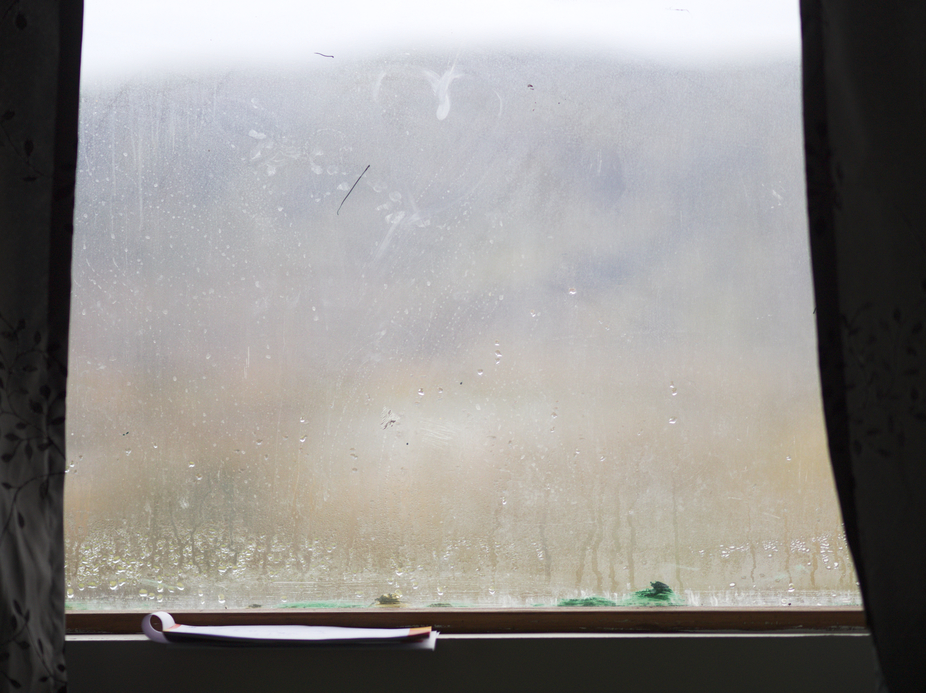
I will close the series on ECMC 2017 by discussing a few sessions and the workshops. They are all important to me because I do believe the CEMC is a conference that is working because the participants are active. ECMC is a conference for and of the participants ultimately.
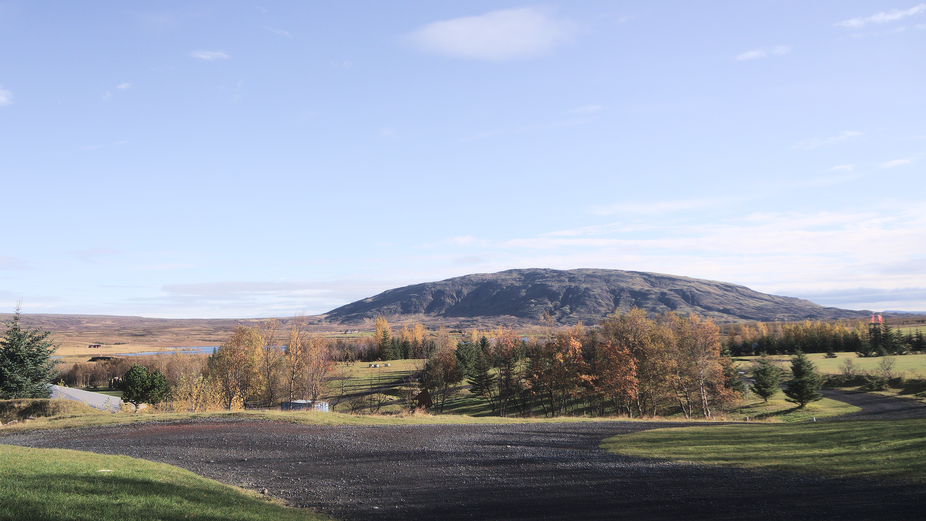
Consulting Challenge
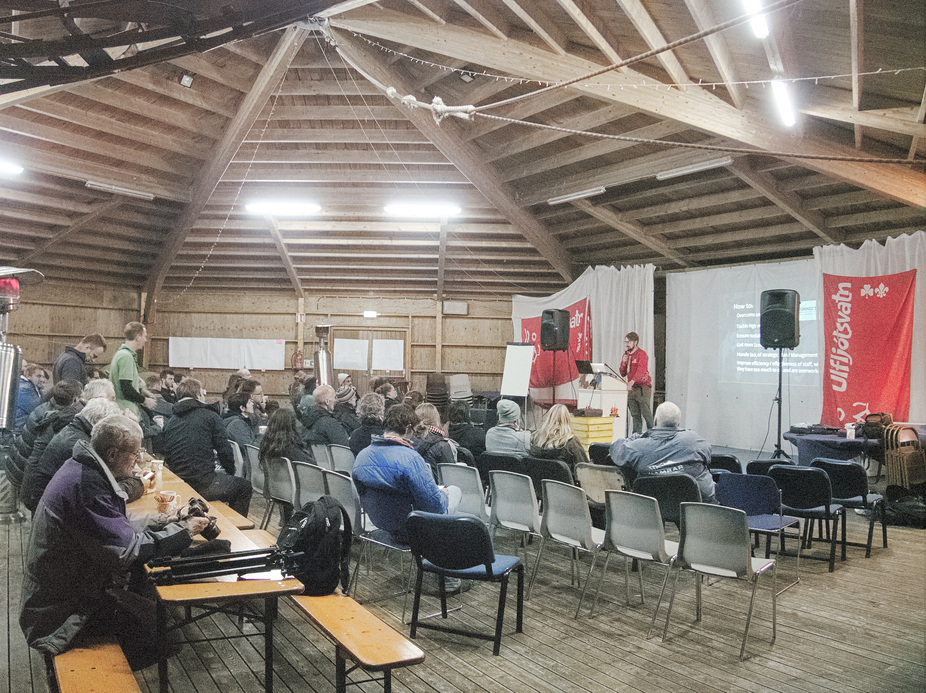
The Consulting Challenge was a new introduction to ECMC. The idea of the session, in essence, was to put the participants to work solving real problems. The participants was asked to act as consultants for an hour to Úlfliótsvatn who got to describe the challenges they wanted consulting help with. This was a really good session and when listening to the output I think it could be applicable to many centres challenges.
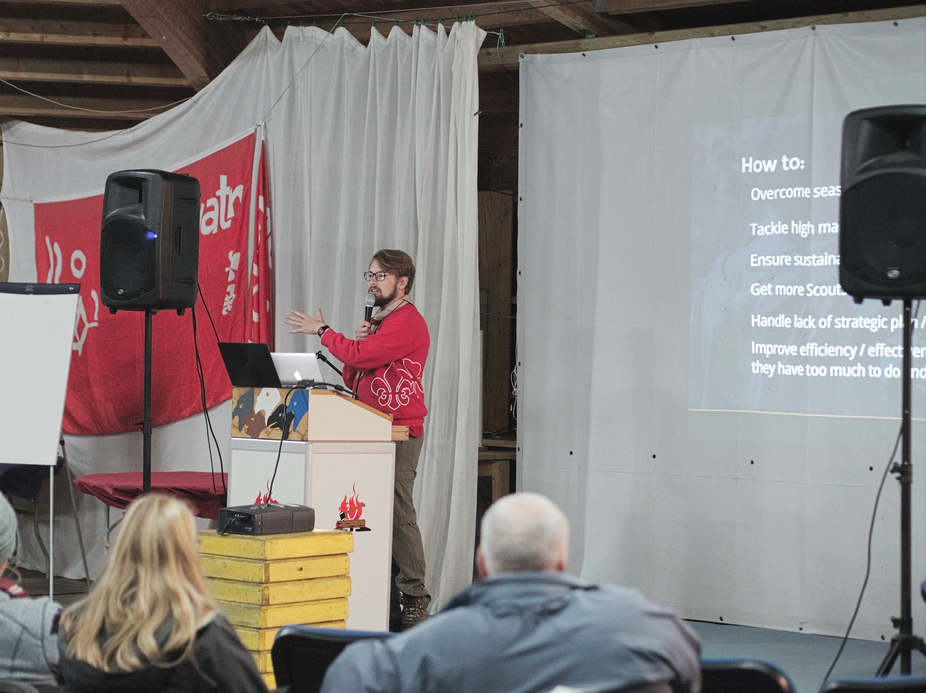
Micro Presentations
Everyone have something to tell/teach and everyone have something to learn. By opening up for a big variety of micro presentations, I think we open many doors to new ideas and discussions. We had so many micro presentations that we had to split the conference into two parallel groups. Since I was running one of the two parallel sessions, I only saw half of the presentations. Running about 25 presentations in rapid succession creates a challenge keeping up with loading new presentation on the presentations computer. I have come to develop a certain fondness for slide less presentations.
A few presentations stood out to me. First of all, we had more than one centre manager speaking the personal challenge of burn out. It is such an important and deep subject I hope we can bring it to the next ECMC.
Another presentations which stood out to me was Rui’s great story behind a scout centre having no memory is a scout centre having no history.
From Scout Valley Lithuania came an inspiring talk by Jonas about how he introduced outside kindergarten in Lithuania influencing national regulations via his scout centre. (making the world a better place anyone?). I’m mighty impressed.
Workshops
We in the planning team always strive to do as few workshops as possible. Participants here enough of us anyway. So we where happy that we could fill so many workshops with hosts not from the planning team. Big thanks from the planning team.
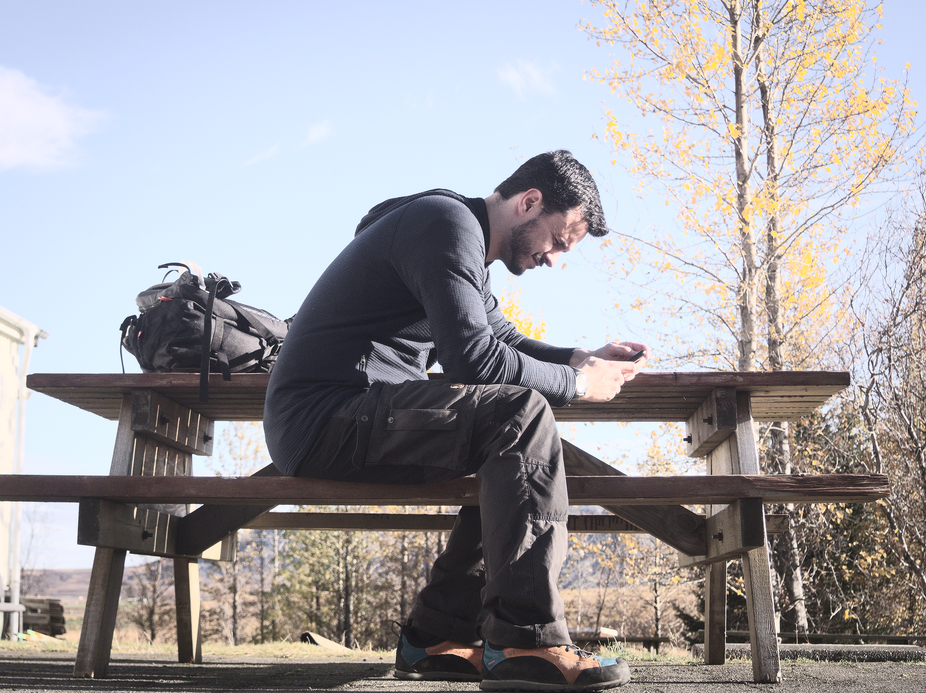
- Diana from Nocrich did an excellent work on using EVS and I think many will start using EVS after this. Excellent.
- Long term ECMC participant Damien of Scouting Ireland got rave reviews for his take on Managing Change and I was happy to be in the room to listen. This was one of my favourite workshops in CMC.
- Connor, also from Ireland did a workshop on Staff and Team Working which I missed unfortunately, but it was very popular (I was running Safe from Harm in parallel).
- Felipe did a workshop on Train the Trainer based on KISC experience, participants was very positive about the workshop.
- Safe from Harm – my own session, mentioned elsewhere in this series.
- World Wide Scout Programme – good participant feedback, unfortunately I was not in the room (I was in the parallel workshop). We noted that the interest for SCENES is still strong.
- The Relationship between Paid Mangers and Unpaid Staff and Volounteers delivered by Karsten of Houens Odde is not only the workshop with the longest name ever that we couldn’t shorten, it is also one of the most well received workshop we have ever had and I think people will remember it for years to come, especially his small exercises.
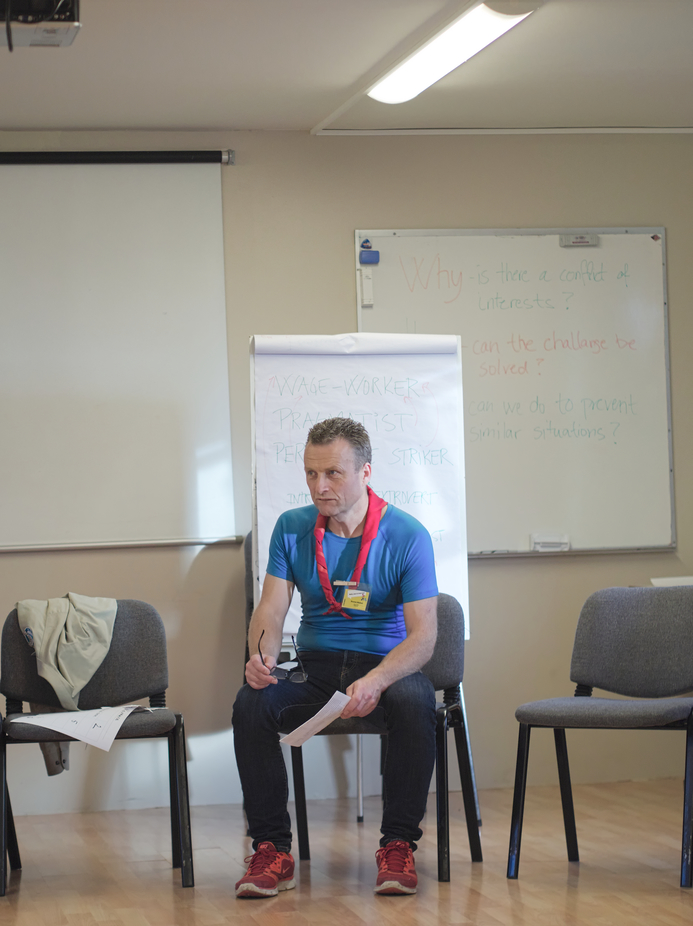
So much more
So much more happened on the conference. I’m still processing some thoughts and ideas, but now it’s time for a set of photos I love to share with you.
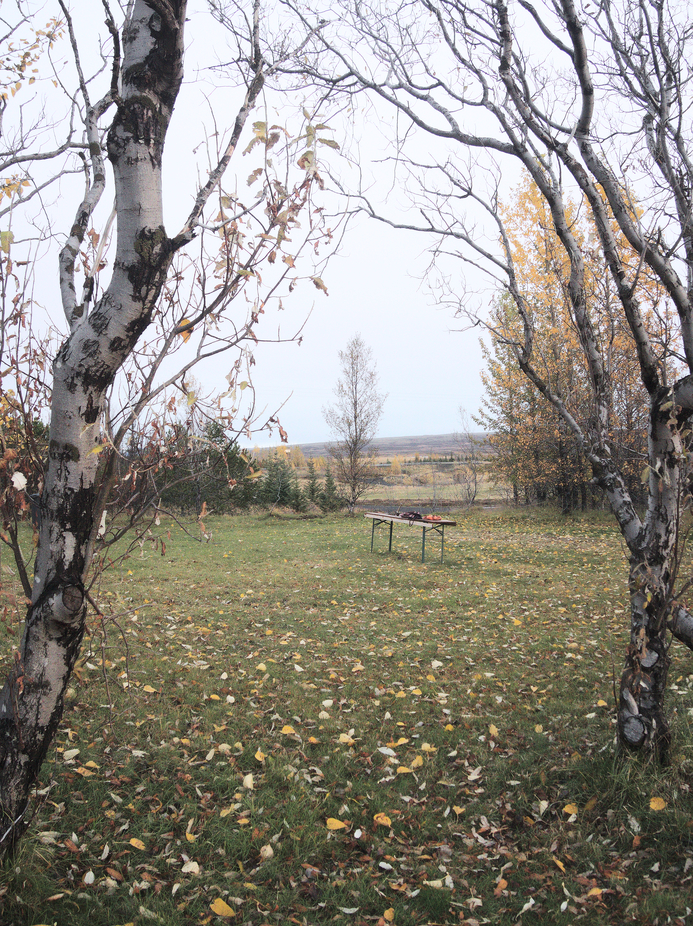
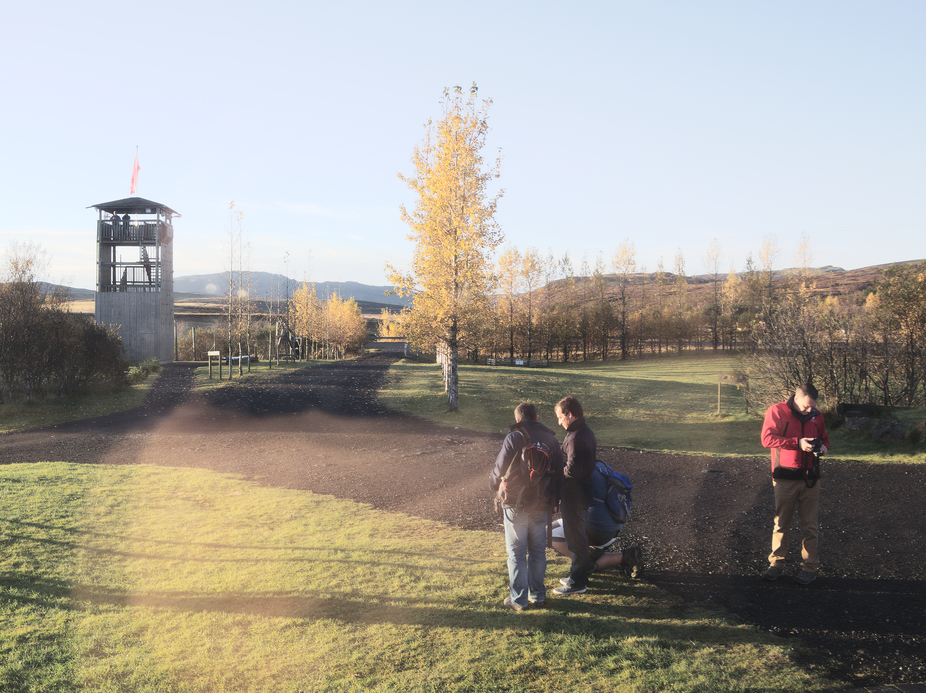
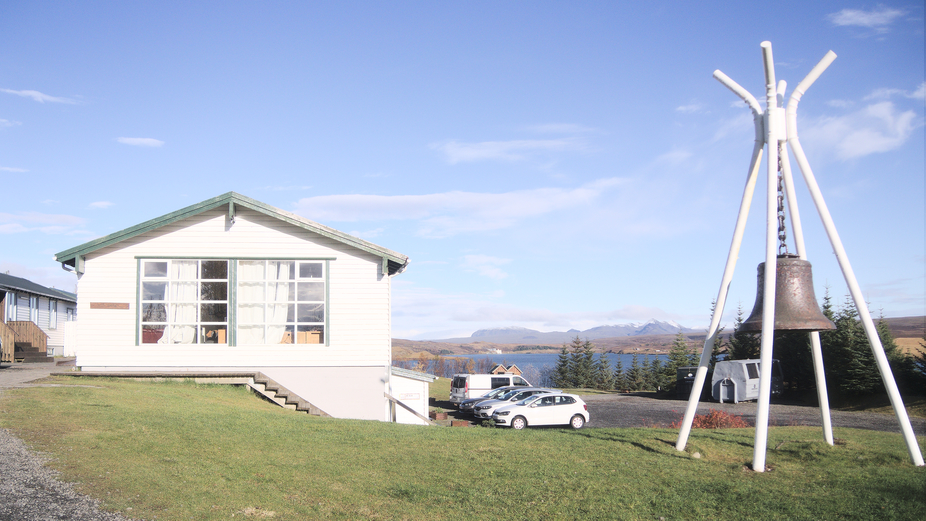

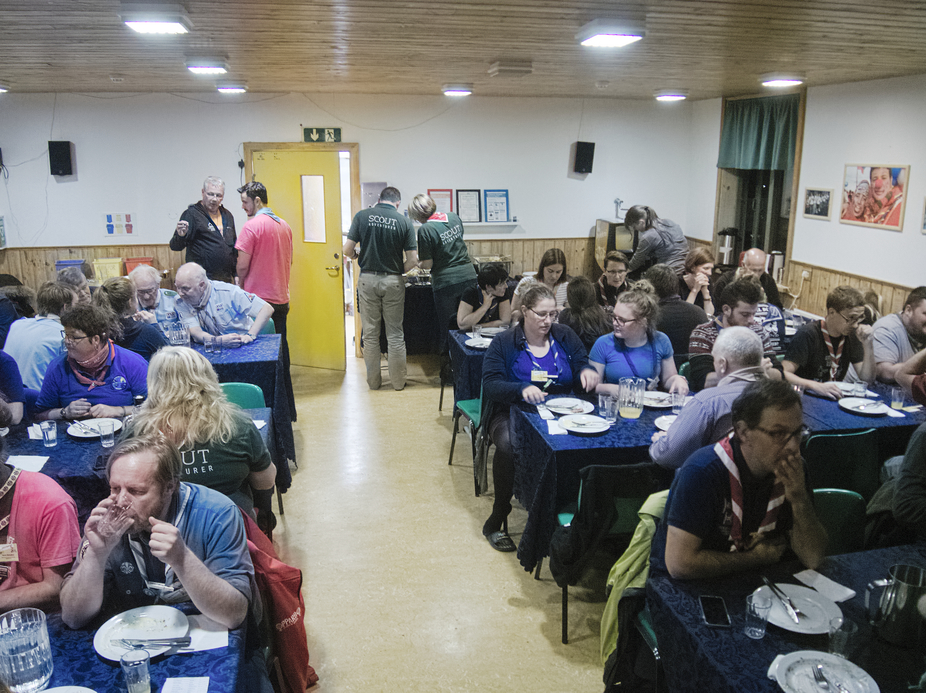
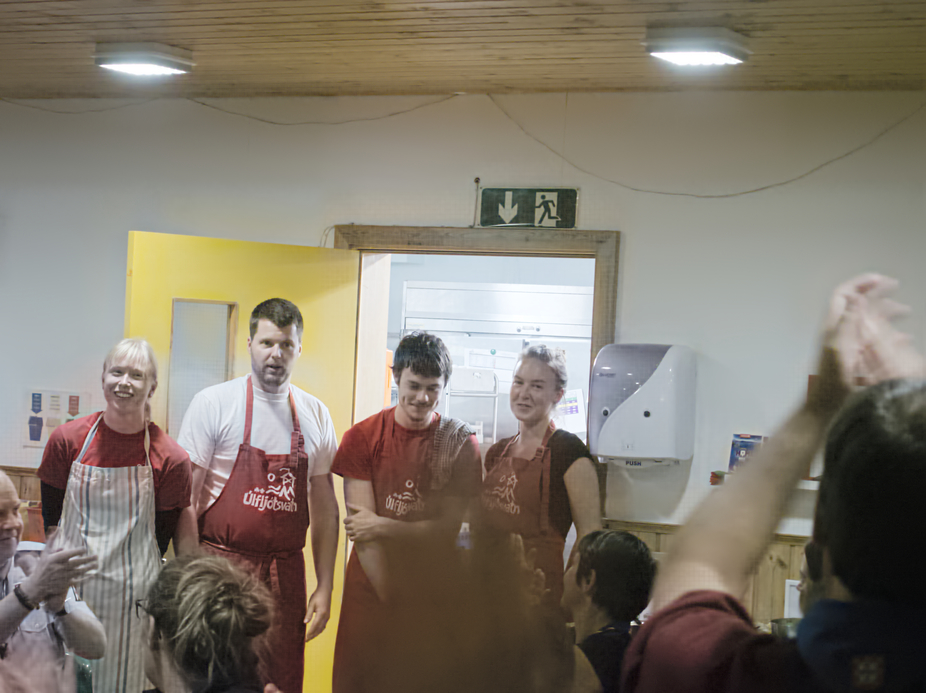
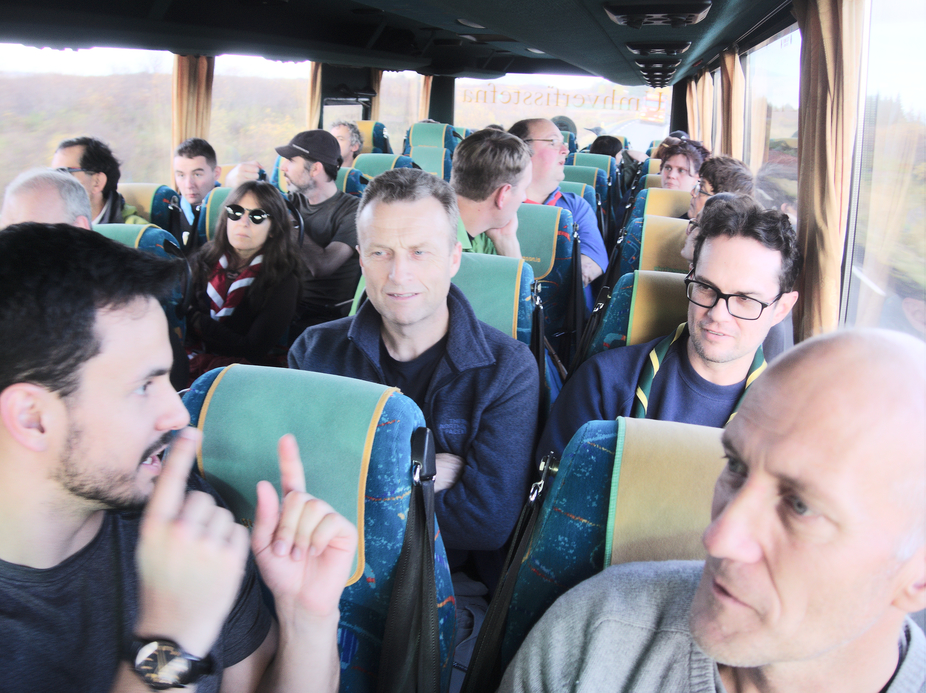
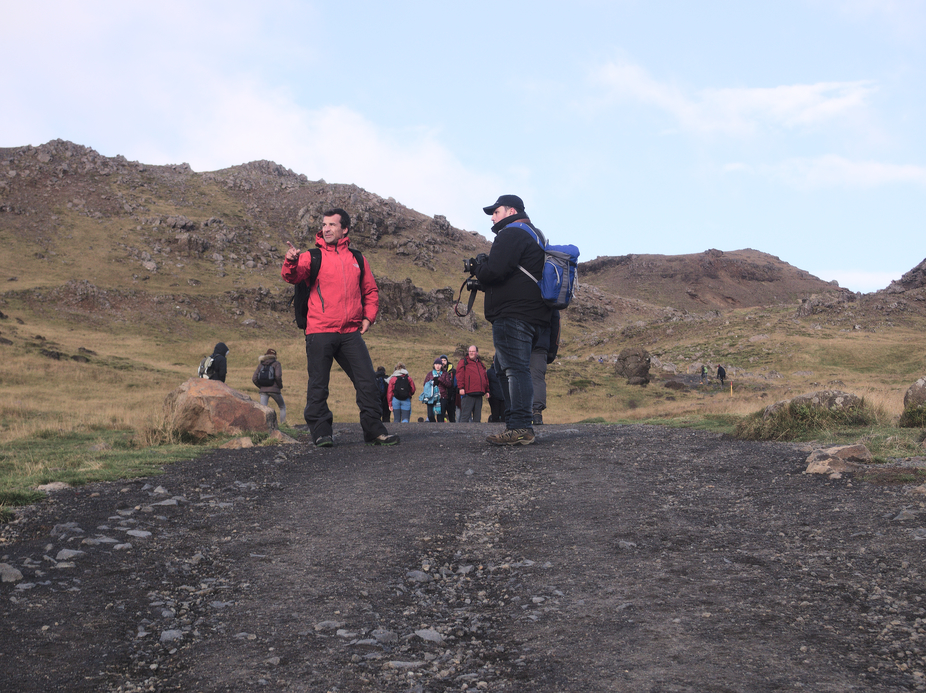
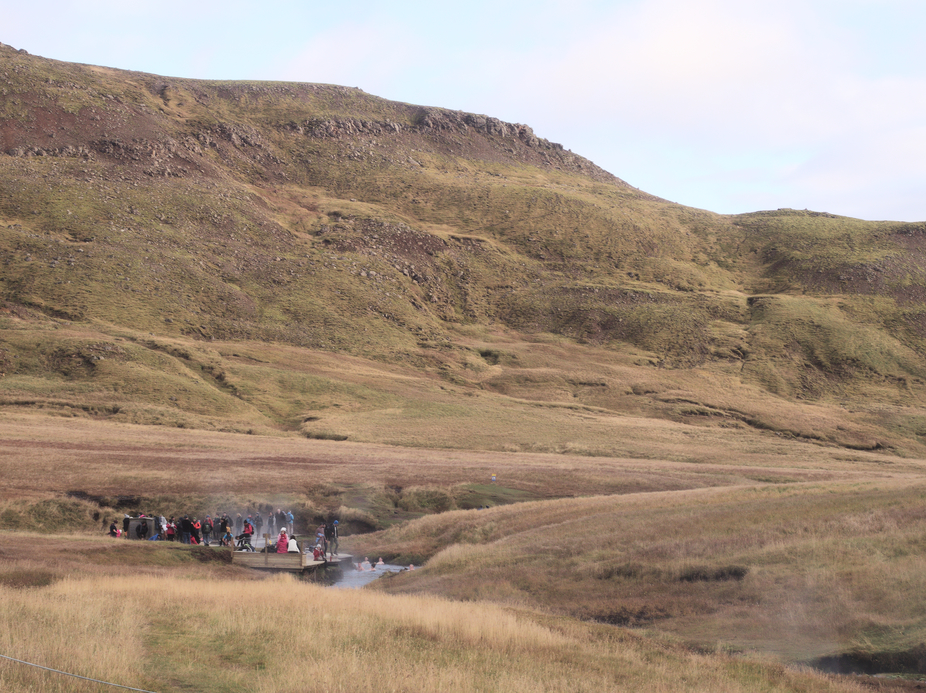
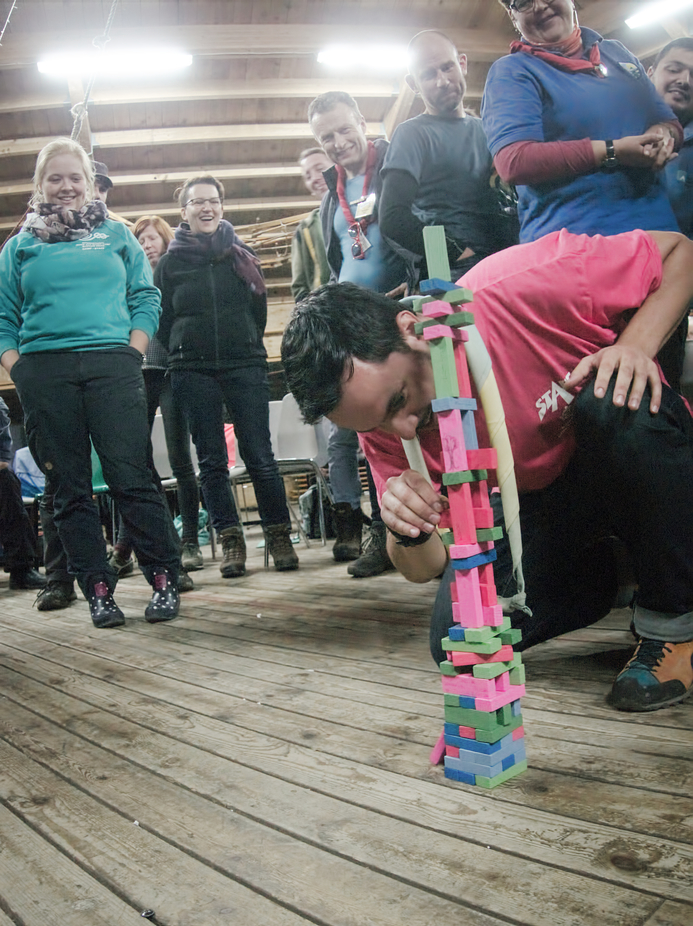
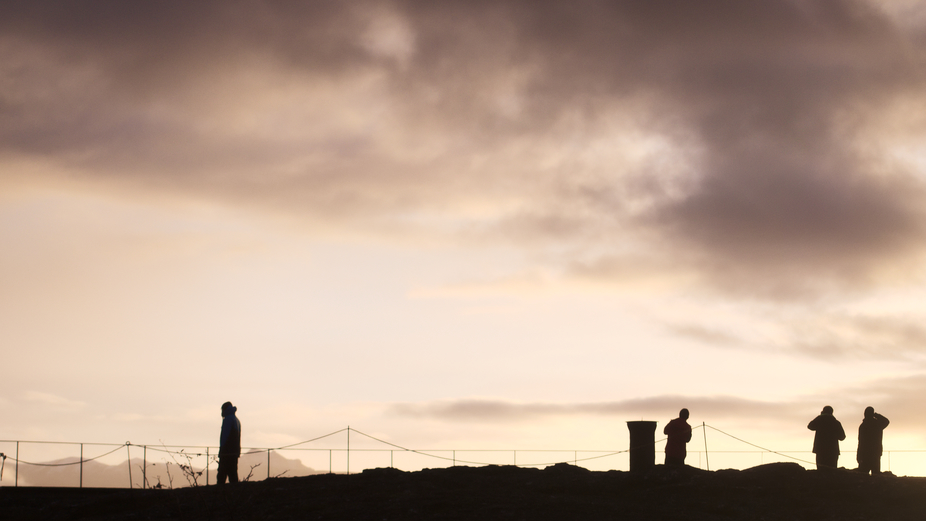
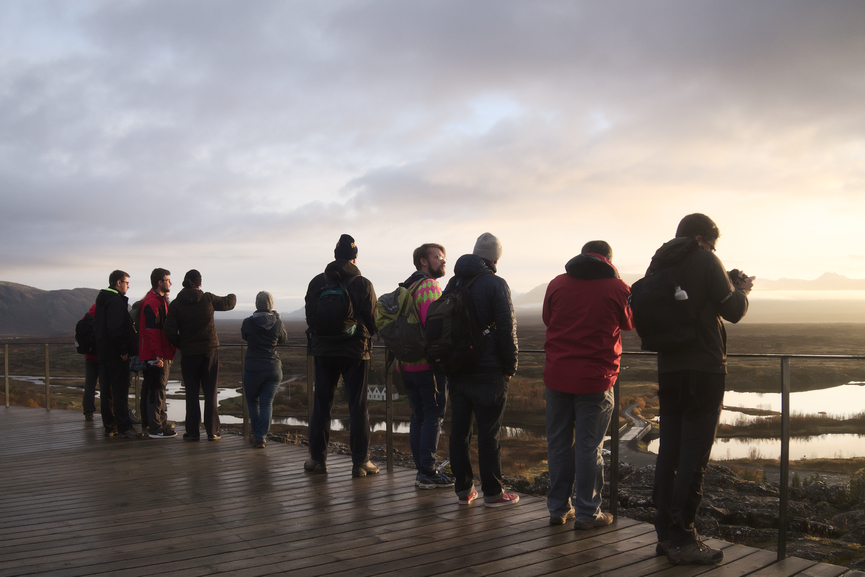

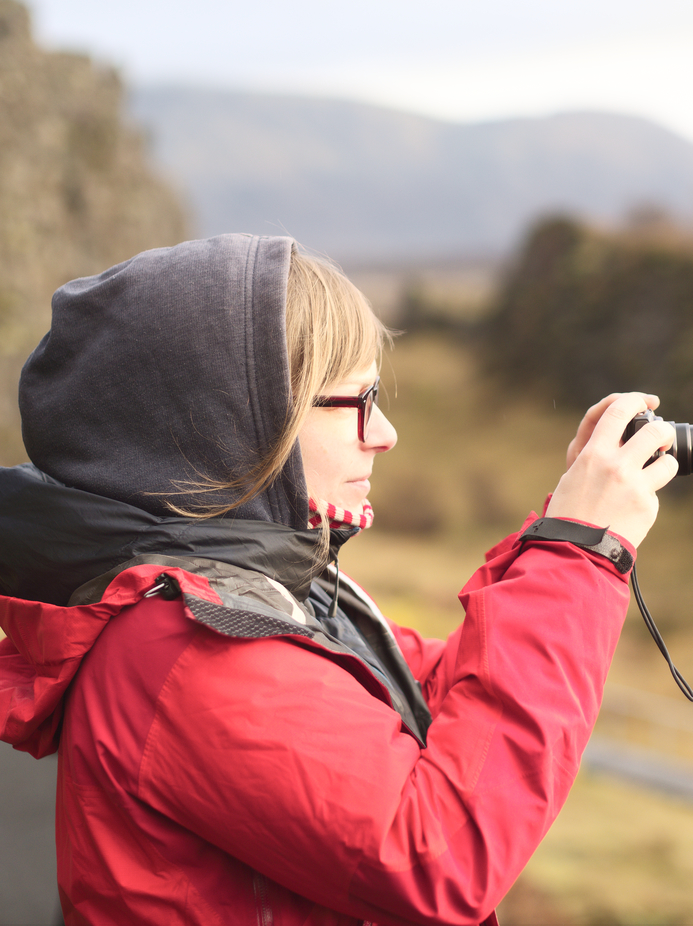
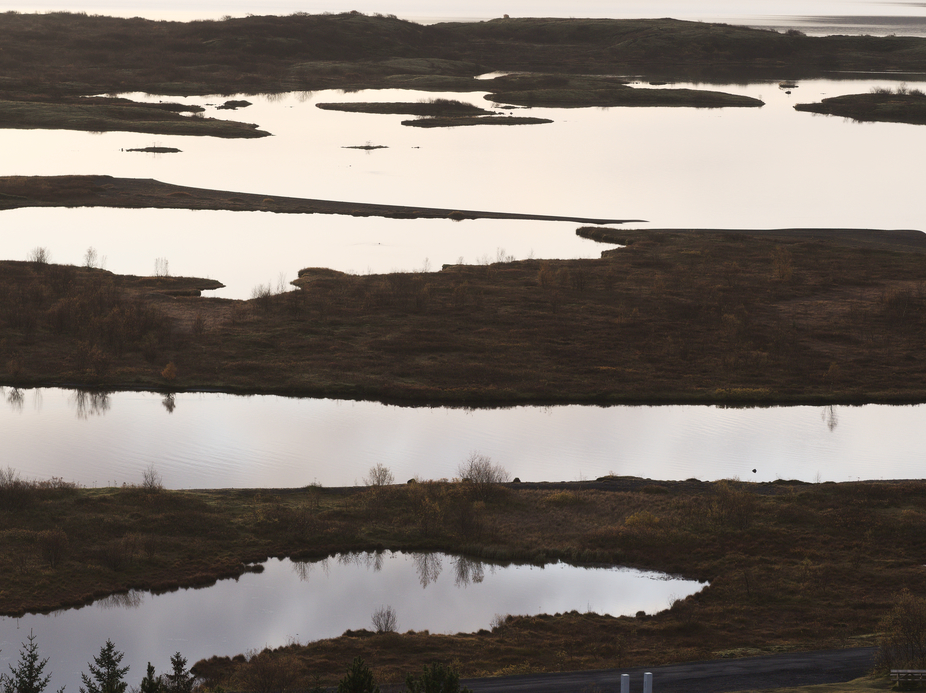
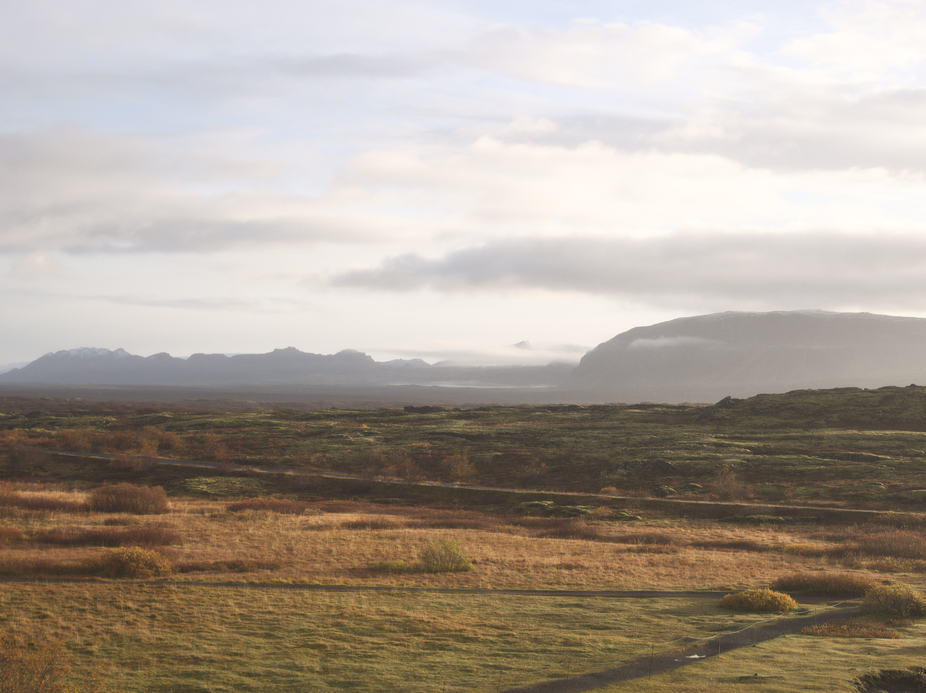

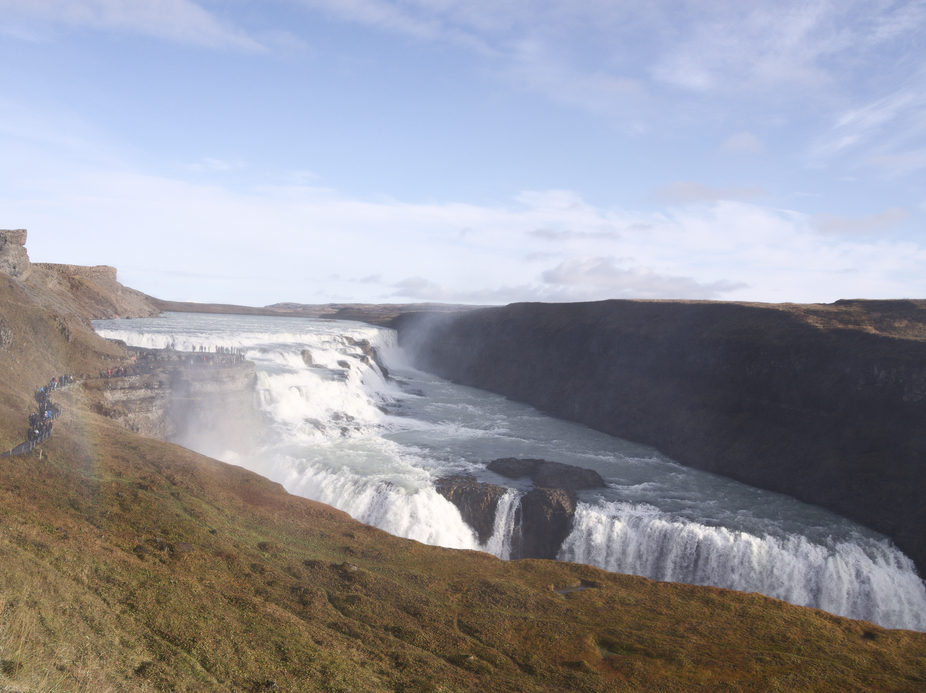
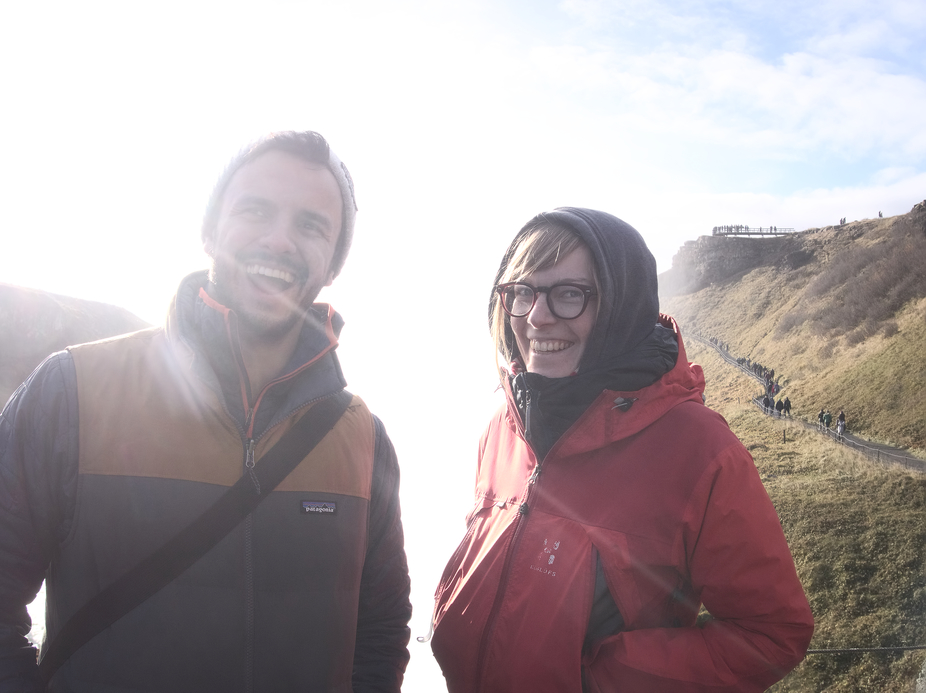
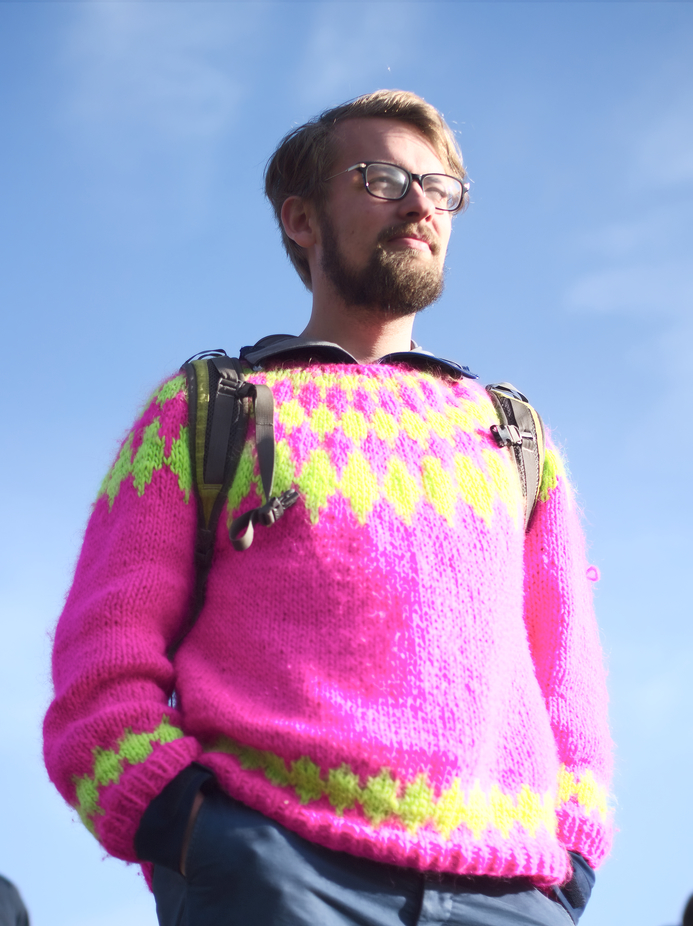
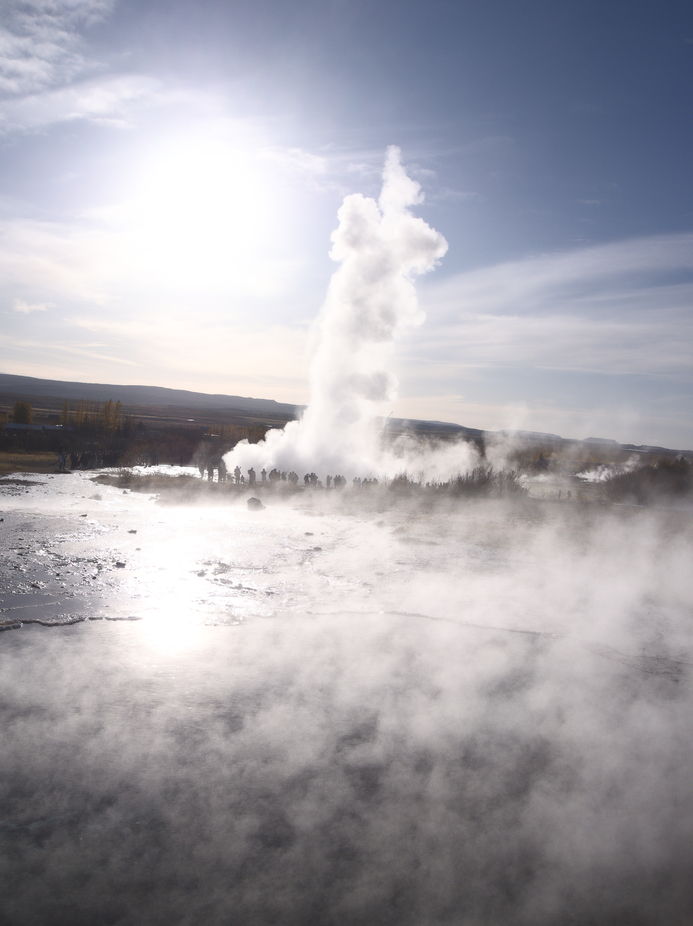
But this is it for now.
Looking forward to see you all again
ECMC 2017 – We dont like to pay for grass
This is part 5 in a series on posts from my experience being part of the planning team for European Guide and Scout Centre Managers Conference (ECMC) 2017.
Scouts don’t pay much for grass, but they can pay a lot for a knife. It’s called price sensitivity. Scouts are price sensitive to grass since hiking tends to be free. We are price sensitive to free things. Knifes are not free, they are even forbidden in some places. So we are price sensitive to knifes, especially if the knife carries a brand name.
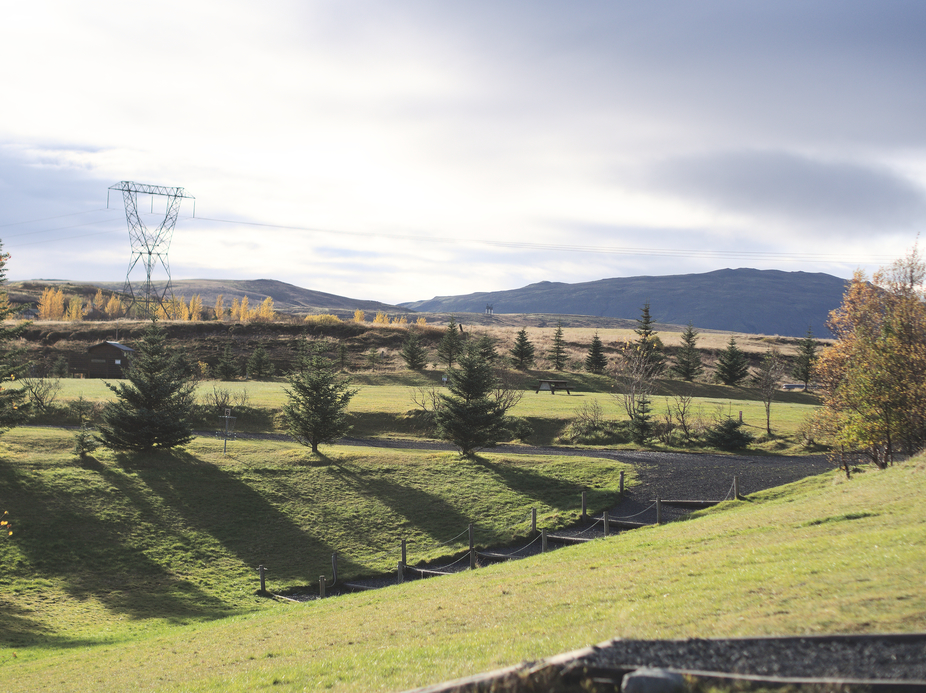
This is how you can have guests at scout centre complaining about the price of accommodation (grass + house + food + toilet + occasional activities to kill time) while happily the scouts spends money on expensive knifes and smart phones.
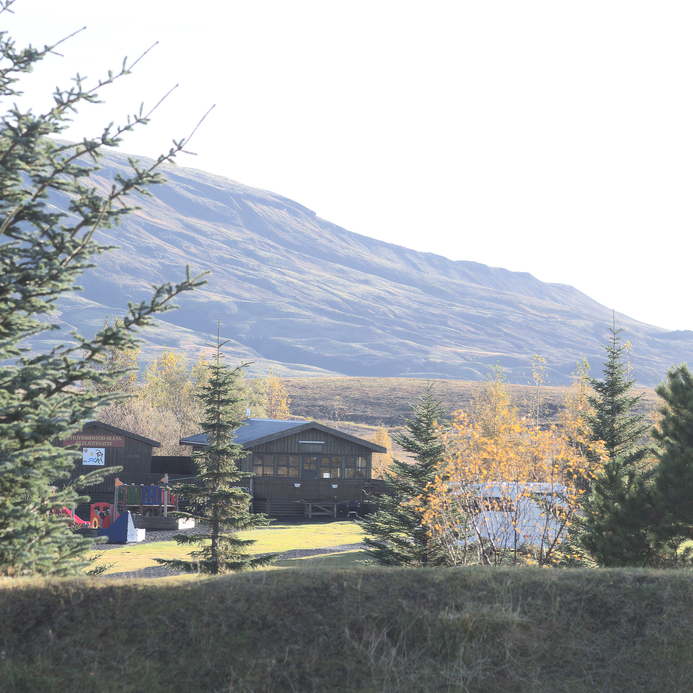
To get out of this, scout centres will have to stop being a hostel-like business and start working as a premium scouting centre. That means embracing and deploying the scout method one level above where we are now. Values and everything. Above all, we can start work as a centres for non-formal learning in a more focused way.
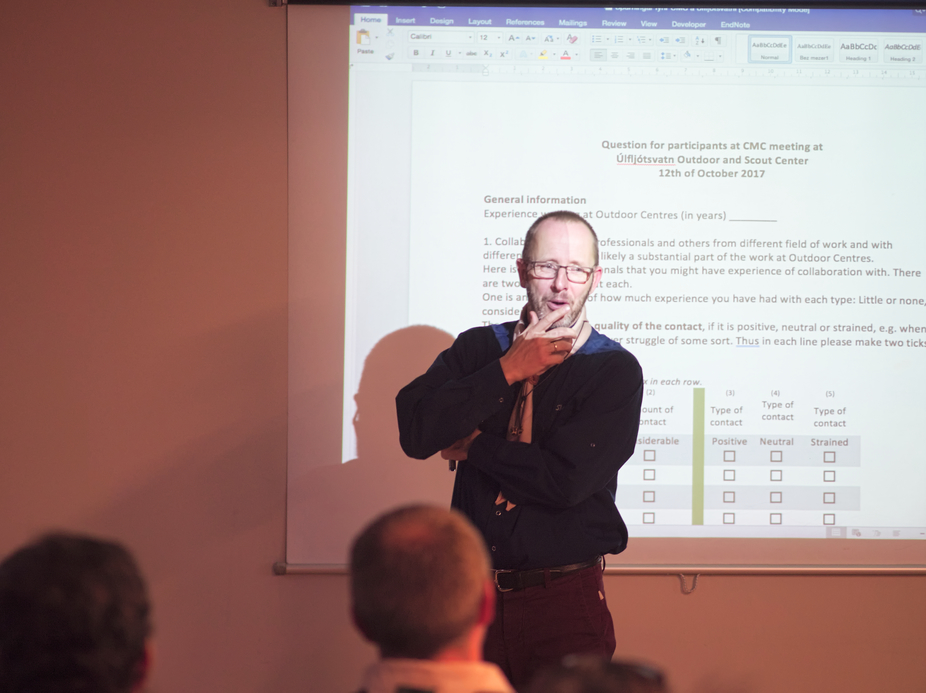
If you don’t know what non-formal learning is, I recommend you to watch John May’s keynote from the educational congress in KISC 2017 if you can find it.
By now, I hope you noticed I consider non-formal learning something important. This is why we asked João to help deliver a workshop on educational methods and non-formal learning. Unfortunately, I had to be in the other parallel workshop so I missed it.
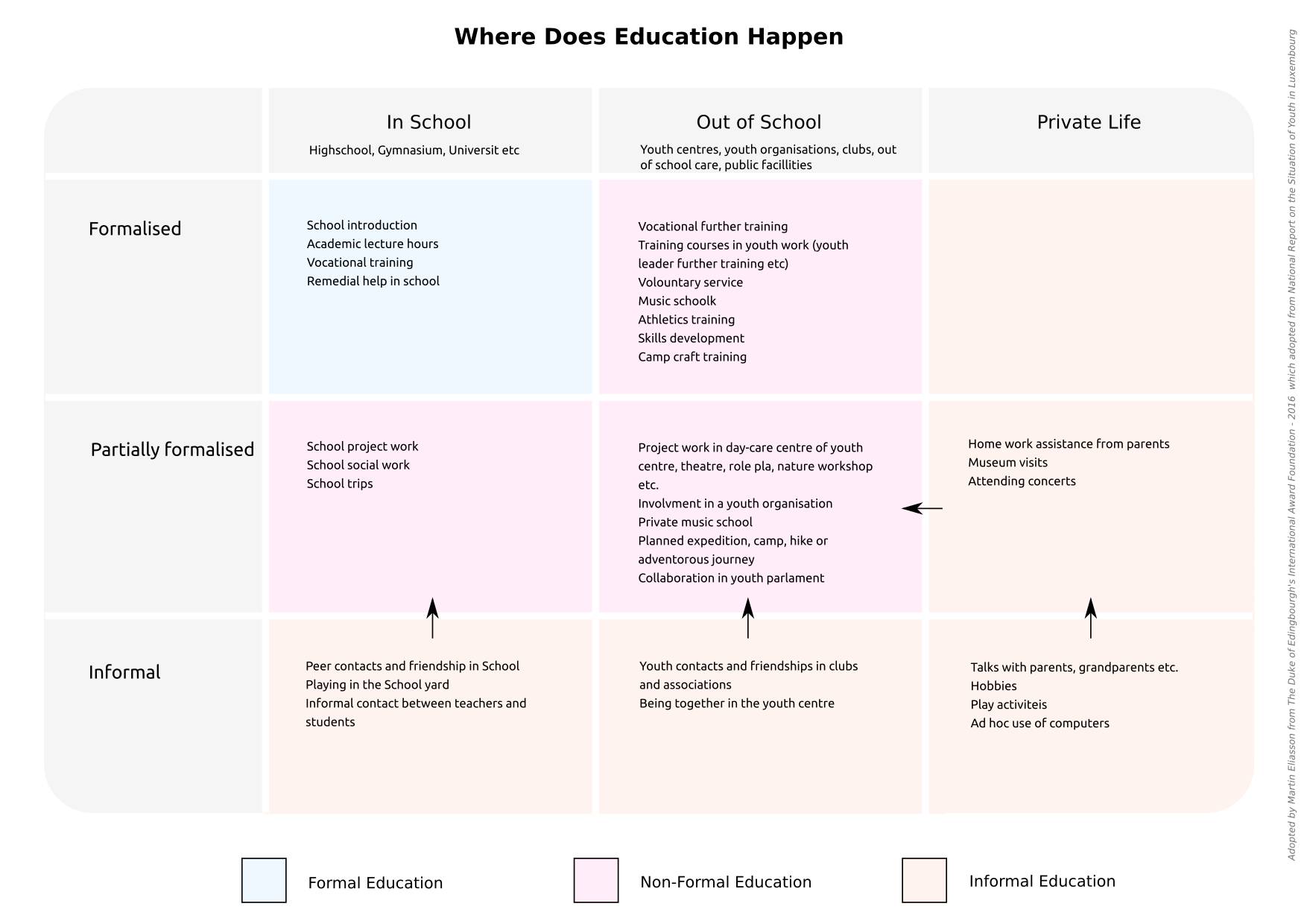
This is why we were thrilled to have Jakob delivering a keynote (the second one) on non-formal learning in outdoor education. Jakob actually does part of his research by visiting Úlfliótsvatn every week. He’s the first keynote speaker I have met who takes the keynote as an opportunity to deepen his research by starting his keynote by asking everyone to fill in a form related to how they got started in scouting etc. His keynote was very interesting and I think he could have spoken for four hours if we had given him time.
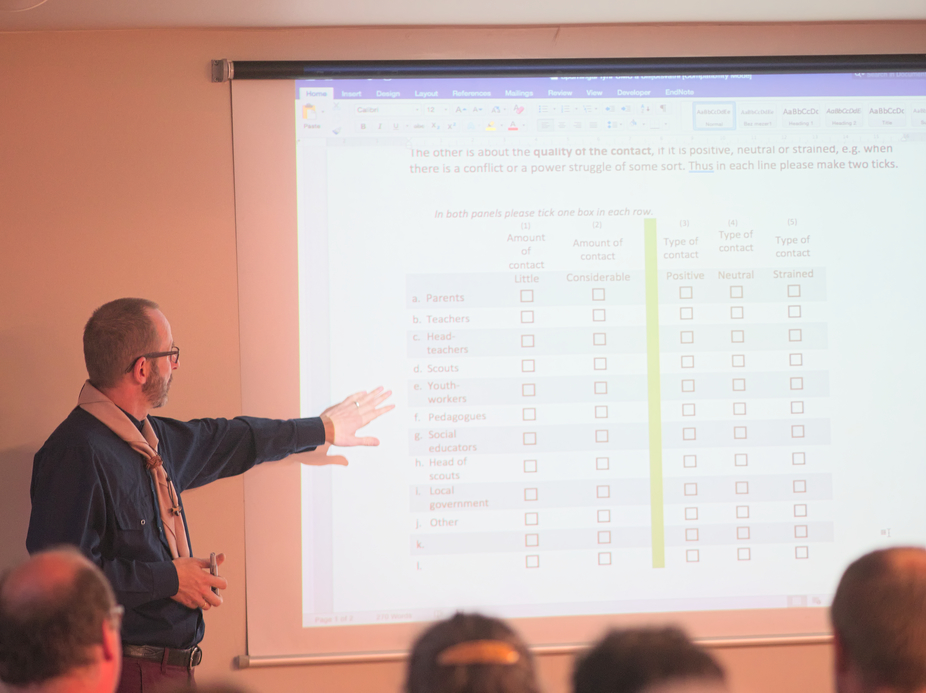
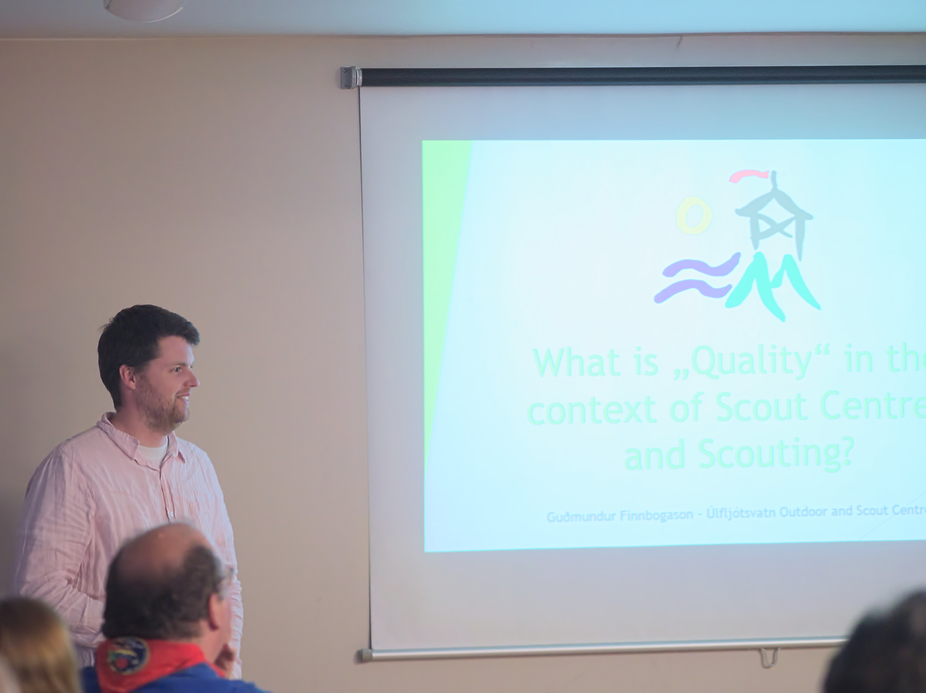
ECMC 2017 – What We Have in Common
This is part 4 in a series on posts from my experience being part of the planning team for European Guide and Scout Centre Managers Conference (ECMC) 2017.
When you travel the world (Europe at least), when you meet scouts from different places or perhaps change country yourself, you get exposed to different kinds of scouting and so you get to think about what is it in scouting, at the core, that we all agree upon.
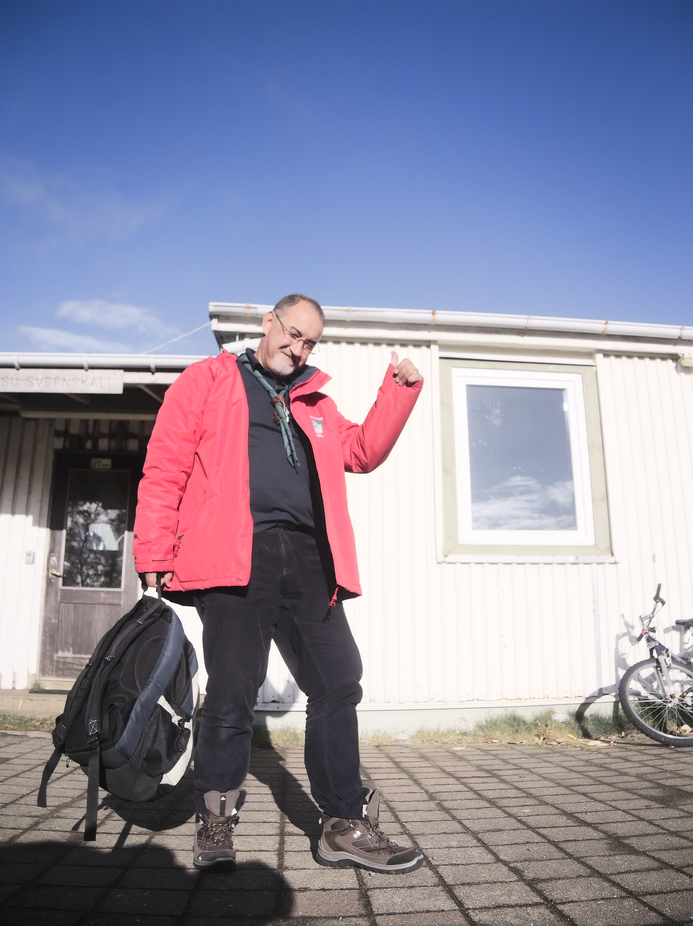
To me, this is no small question. I believe that the common core that we share in scouting is the one place where I look for answers on how to improv any scouting endeavour. The core is what really works in scouting.
My current understanding I have come to is based on a very simple observation: what we have in common is: the law (and in addition, the belief in positive examples, not rules), the scarf, the promise and the will to make the world a better place. We have non-formal learning as one of our most important tools. Actually, I have observed that the toolkit in our non-formal learning system like the patrol system, learning by doing, symbols and ceremonies etc. tend to be deployed differently in different places, and if I ever hear about challenges in a local scout community, I always see that there is a weakness in the application and understanding of the toolkit.
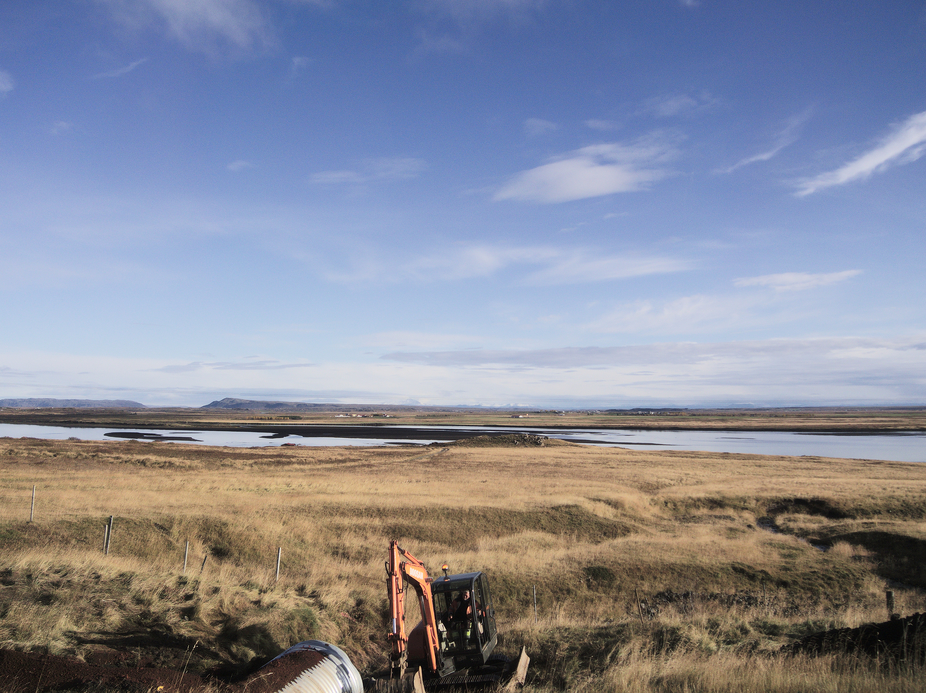
Safe from Harm
I really wanted a session on Safe from Harm at this ECMC, so since I couldn’t find anyone to host it, I decided to make it myself. I don’t consider my self qualified for it, but both my will and request for it was there, so I decided to do it anyway.
I should make a special mention of the training session template that Felipe introduced, it helped a lot with the planning of the Safe from Harm workshop.
Most things I learned by running this workshop came out of a few exercises we did based on something called Photo Jolts. Basically, I asked two questions related to a lot of Photo Jolts photos I had spread out through the room (Northern Hall):
- What three aspects of Safe from Harm do you think is most important at your centre?
- Which five most important things in the ‘fictive’ Safe from Harm policy document (that I had handed out as part of the session) do you think is missing?
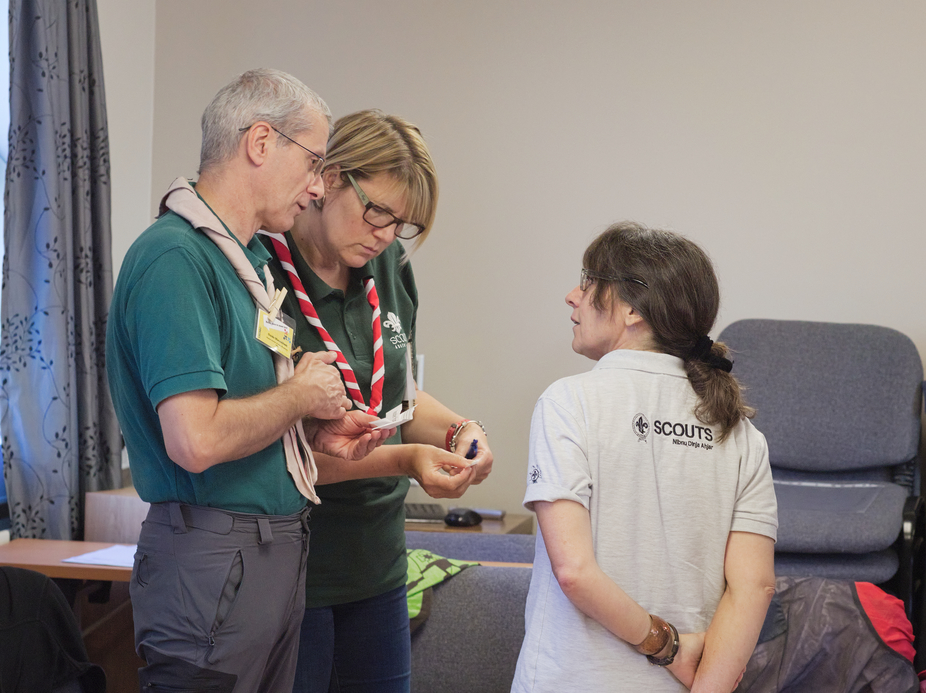
The discussion that followed was very interesting. Taking a look at what was being said, it basically came down to a list of items and that list of items was not new to me. I had seen similar lists throughout my scout career in various context. It just wasn’t called Safe from Harm. When we talked about what could be done, we essentially reformulated old scout values and principles. Things like uniform and scarf to show inclusiveness or methods.
The toolkit is indeed important.
As an end note, I would say a specific method to handle bullying would do our movement well. It came up a lot. On second place we had loneliness.
ECMC 2017 – Vision 2023
This is part 3 in a series on posts from my experience being part of the planning team for European Guide and Scout Centre Managers Conference (ECMC) 2017.
There is a not so insignificant gap between scout centres and the NSOs (National Scout Organisations), regional level and world level (for example European Region and WOSM). Centre Managers tends to be doers who are not so thrilled by the organisational structure and political manoeuvres of scout organisations. Scout organisations on the other hand has a defined structure where neither schools nor scout centres fit in. They don’t fit the organisational chart.
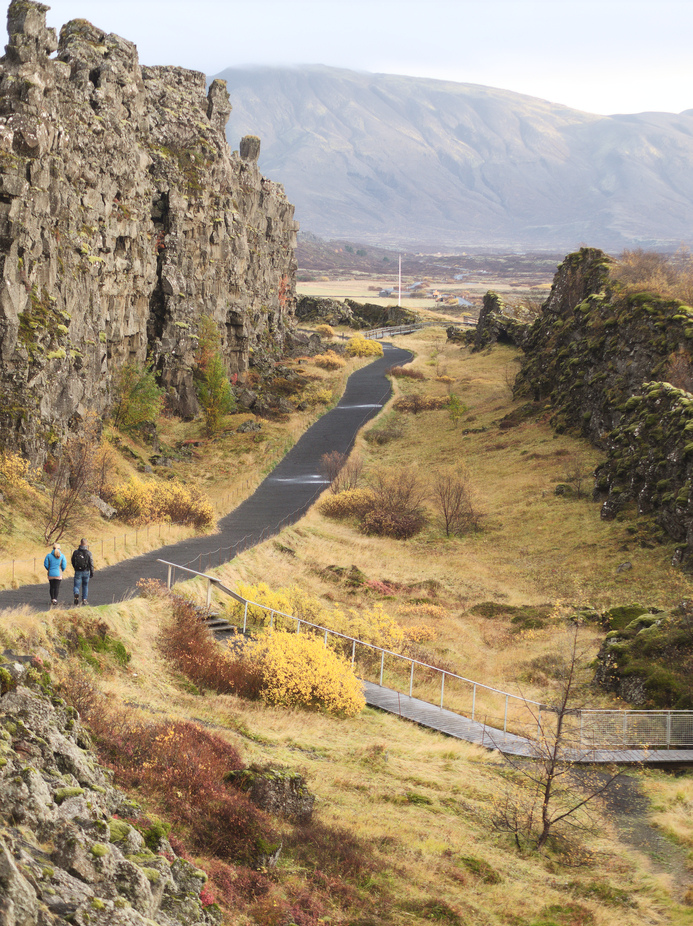
Organisations in general tend to view the world around them through their organisational structure, and since scout centres in general don’t fit in at all, they are off the radar. Schools don’t fit in either and so all the non scouts, school children comes to mind, who every year visit scout centres are off the chart for all our organisations, the same organisations that so often writes about reaching out to society.
It’s telling that excited school children was what I met when I arrived at the centre, but as the conference starts, they are no longer around.
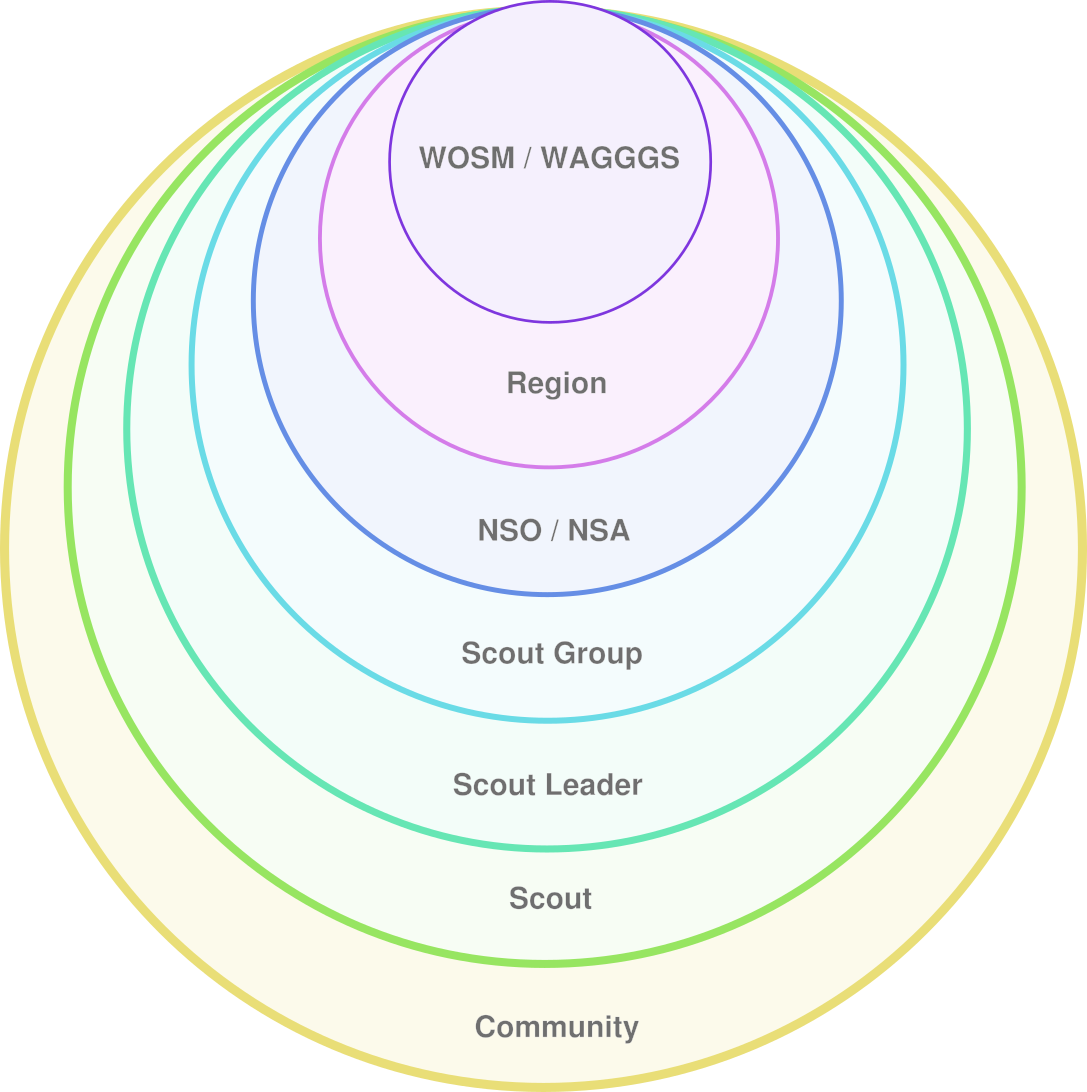
This ECMC we were so lucky to get three key note speakers, João Armando, who was the Immediate past Chairperson of the World Scout Committee, Hulda Sólrún Guðmundsdóttir who are the vice-chairperson of the European Scout Committee and Jakob Frímann Þorsteinsson, Adjunkt lecturer, Department of Leisure Studies and Social pedagogy at University of Iceland.
I had asked João to speak about the WOSM Vision 2023 and how scout centres can relate to that. Scout centres need to start thinking about how WOSM and WAGGGS work, where they are going and how they can be approached. It’s part of the long term solution.
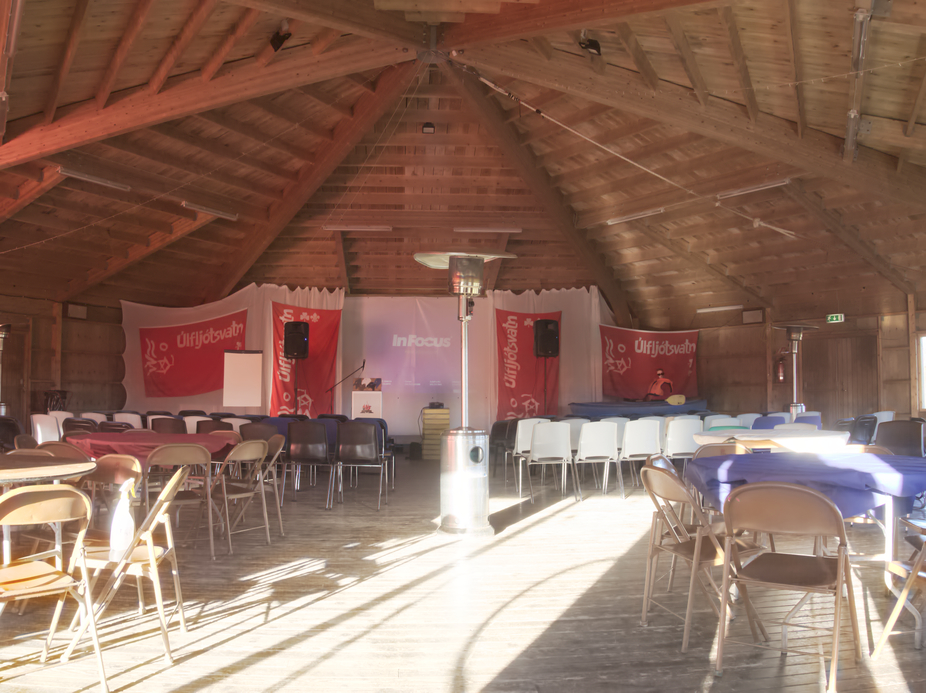
We had planned to start the ECMC in the Big House. The Big House is quite big, it’s a round house made of wood with wooden floors and a few windows. There are no pillars inside so the whole building is very spacious. We had spent part of the opening day with cleaning out conference rooms and preparing the biggest of all places (the Big House) and now there was a small but important issue to solve. The building had no insulation and no heating. The gas heaters did not work as intended and shut down shortly after being started. Too late we learned the gas in the base of the heaters gets too cold and that this is solved by removing the covers over the gas canisters.
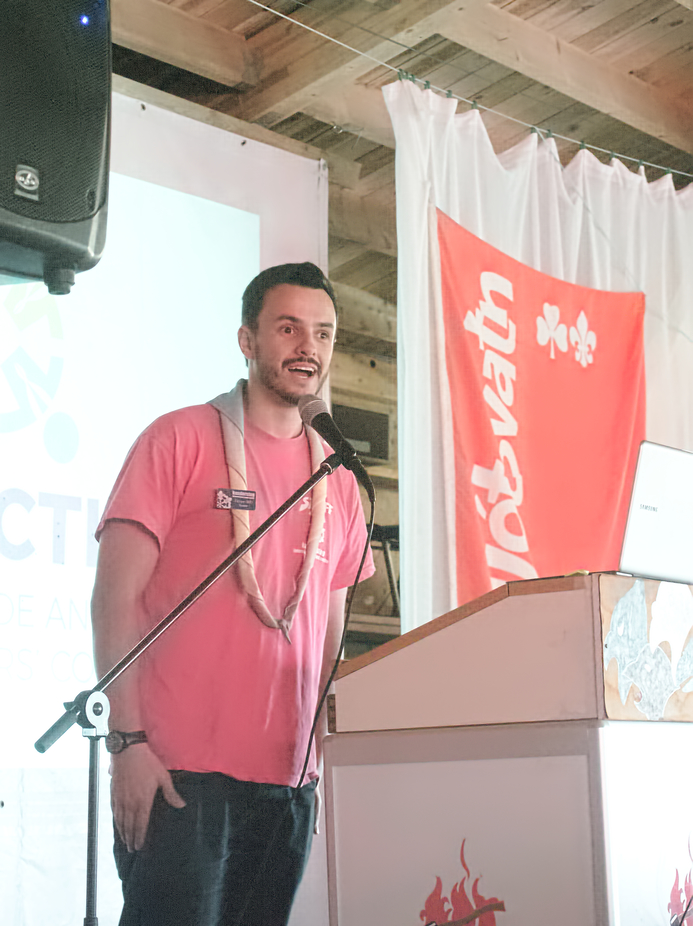
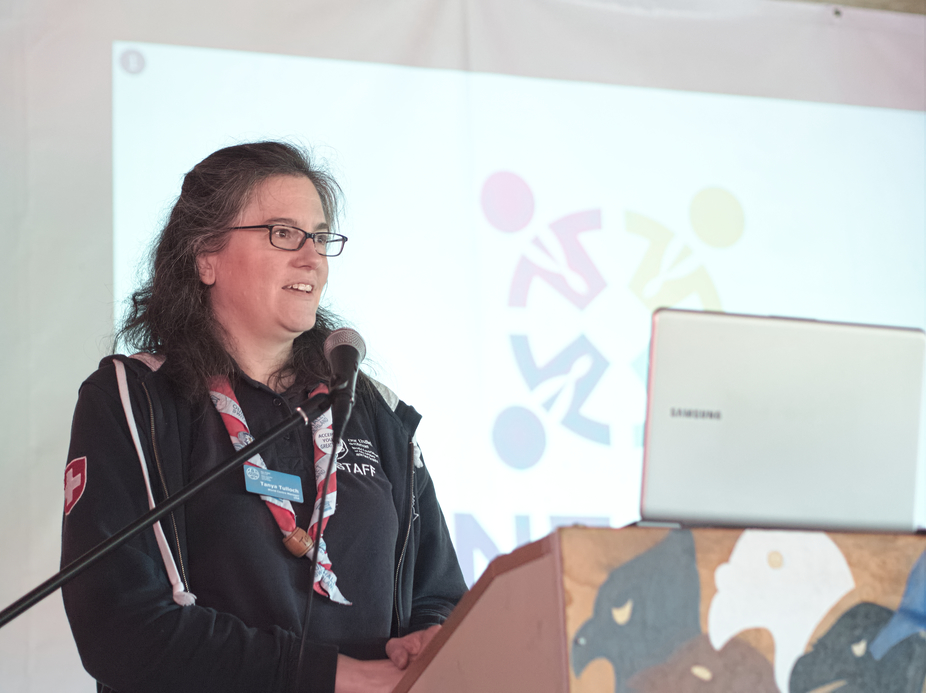
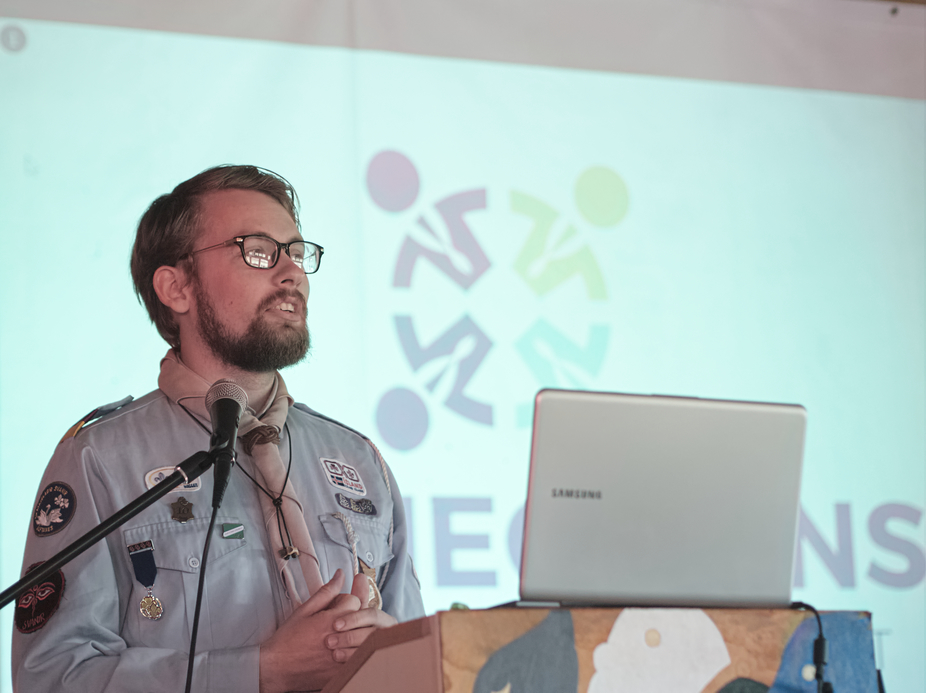
We opened the conference with the usual welcomes and icebreakers but then it was too cold so we had to move to the Northern Hall for the keynotes. The Northern Hall was big enough for all participants, but just barely and we still had our coffee and cake down in the Big House.
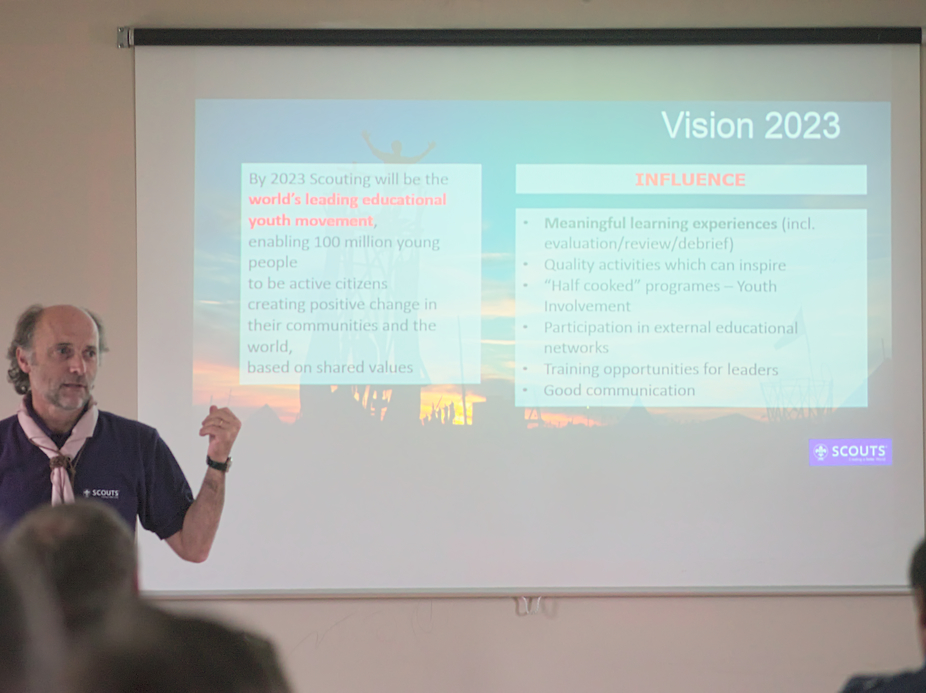
João started the key note by asking who many in the room knew of Vision 2023. Three hands in the air (not counting planning team). That is all you need to know about how the divide looks like and it is also why we where so very happy to have João come present as keynote speaker. During my years at ECMC, this keynote was one that gave the most positive immediate feedback.
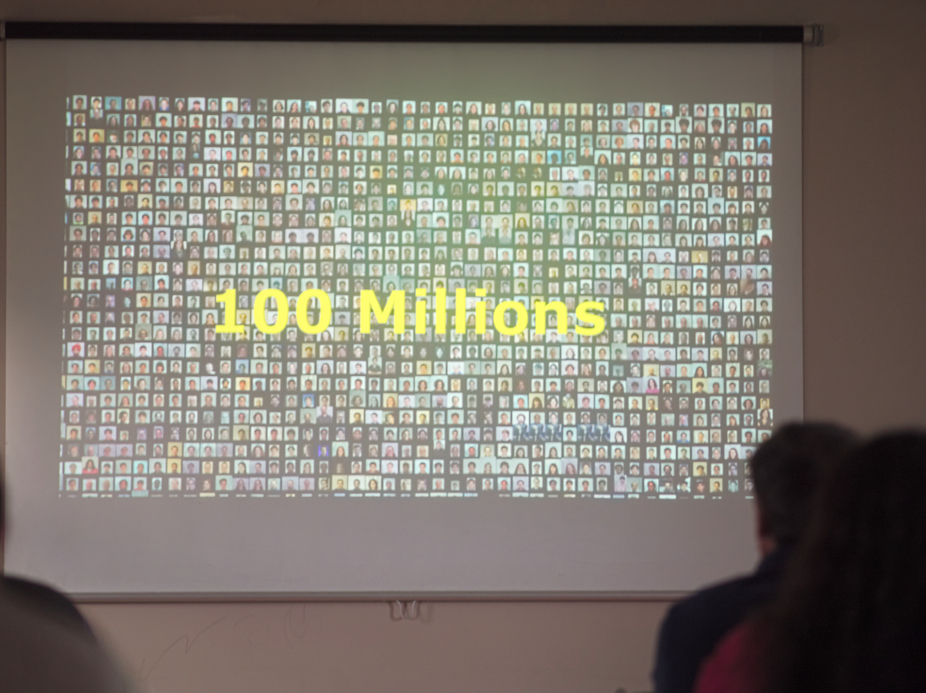
The second most popular was the keynote that followed by Jakob.
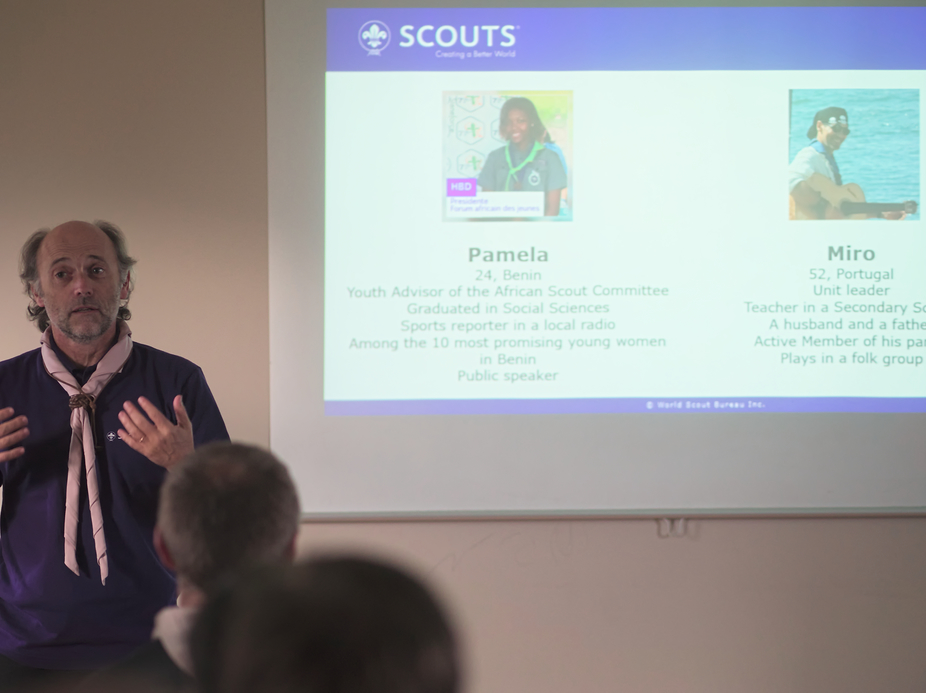
If you don’t know about Vision 2023, it’s definitely time to learn about it.